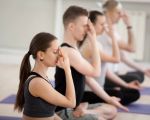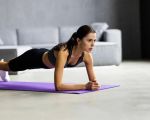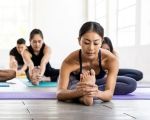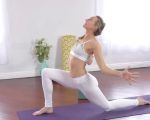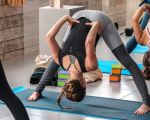- 1-understanding-your-yoga-practice-needs
- 2-material-types-and-their-impact-on-performance
- 3-importance-of-thickness-and-cushioning
- 4-grip-and-traction-considerations
- 5-portability-and-durability-factors
- 6-personal-stories-on-finding-the-right-mat
- 7-expert-tips-for-making-your-final-choice
1. Understanding Your Yoga Practice Needs
Choosing the best yoga mat starts with knowing your unique practice style and requirements. Whether you’re into gentle Hatha or intense Power Yoga, your mat should support your movements and comfort level. Beginners often prefer thicker mats for extra cushioning, while advanced practitioners might opt for thinner, more responsive mats that provide better floor feel and stability.
Considering your practice frequency and environment—studio, home, or outdoors—also influences the best mat choice. Reflecting on these needs forms the foundation of selecting a mat that truly enhances your yoga experience.
2. Material Types and Their Impact on Performance
Yoga mats come in various materials like PVC, natural rubber, TPE, and cork, each offering distinct benefits and drawbacks. PVC mats are durable and affordable but less eco-friendly. Natural rubber and cork mats provide excellent grip and are biodegradable, appealing to eco-conscious yogis.
The material affects not only grip and comfort but also mat longevity and maintenance. For example, rubber mats excel in traction, essential for hot yoga sessions, while cork mats offer natural antimicrobial properties. Understanding material differences empowers you to match your mat with your practice style and values.
3. Importance of Thickness and Cushioning
Thickness significantly influences comfort and support. Standard mats range from 1/16 inch (thin) to 1/4 inch (thick). Thicker mats absorb impact better, protecting knees and joints during poses that apply pressure. However, they may reduce stability for balance-focused postures.
Some yogis prefer ultra-thin mats for portability and ground connection, while others prioritize cushioning to prevent discomfort. Balancing these aspects based on your practice and body needs is key to optimal performance.
4. Grip and Traction Considerations
Grip prevents slipping, a critical safety and performance factor. Mats with superior traction allow confident transitions and hold poses without fear of sliding. Materials like rubber and textured surfaces enhance grip, especially in sweaty or heated sessions.
Testing mats for tackiness before purchase or reading user reviews can reveal grip quality. Choosing a mat with reliable traction helps maintain focus and reduces injury risk.
5. Portability and Durability Factors
If you travel often or attend classes outside your home, portability is crucial. Lightweight mats that roll up compactly make transport easier. Durability ensures the mat withstands regular use without tearing or losing shape.
Balancing these can be challenging, but selecting mats designed for travel or studio use helps meet these needs. Durable materials combined with portability make your mat a lasting companion for your yoga journey.
6. Personal Stories on Finding the Right Mat
Many practitioners share how finding their ideal yoga mat transformed their practice. One yogi described switching from a slippery PVC mat to a natural rubber mat, which improved balance and confidence, enhancing her enjoyment and progress. Another recounted the struggle with bulky mats until discovering a lightweight cork option that fit her active lifestyle perfectly.
These stories highlight that the right yoga mat is a personal choice shaped by individual needs and experiences.
7. Expert Tips for Making Your Final Choice
Experts recommend trying out mats when possible, paying close attention to texture, thickness, and comfort. Don’t overlook the importance of eco-friendliness if sustainability matters to you. Consider your budget but focus on value and features that support your long-term practice.
For comprehensive reviews and the best yoga mat selections tailored to your needs, visit Free Yoga Links, your trusted source for yoga essentials and advice.

